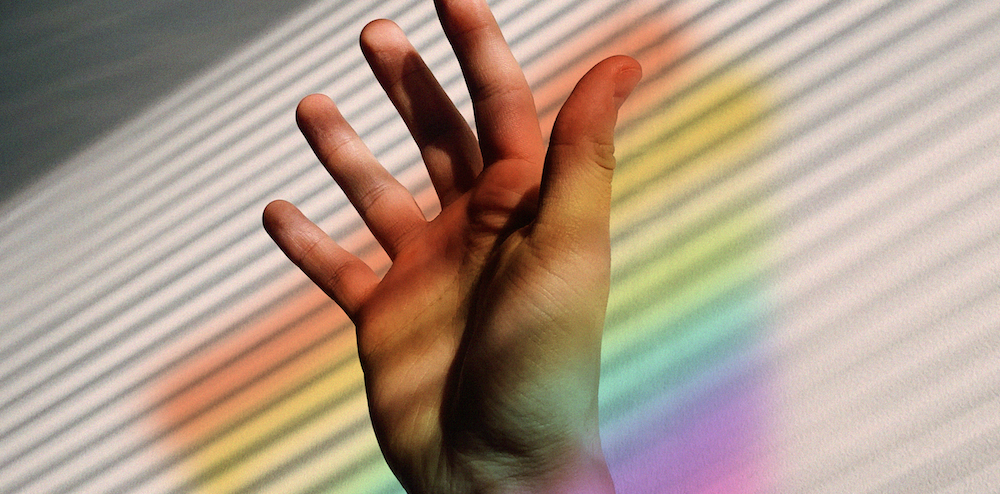
Have you ever felt like something was on your skin, but looked down to see nothing there? For those with tactile hallucinations, this is a regular, and often disturbing, occurrence, but there are coping strategies to help you through it
It’s 1am, I’m laying in bed, and I can feel something crawling over my skin. There’s a ticklish feeling over a toe. I slap it with the palm of my hand. A few seconds later I feel something on my leg, my arm, even my face and neck. It goes on and on for hours.
My first reaction was to assume there must be a mosquito. Countless times I got out of bed, turned on the light, and scanned the room for it. But there was nothing to find. If this happened once, I would shrug it off, but when it happened every day and night for weeks, it was a clear sign that something wasn’t right.
This was my first experience of tactile hallucinations. It was surreal and disturbing to look at my arm and see the skin where it feels there should be some kind of insect. I would keep looking at it and see there was nothing there, but still the sensation would linger on.
"Tactile hallucinations can be very distressing to the person experiencing them"
What are tactile hallucinations?
“Tactile hallucinations are the false perception of tactile sensory input, creating a sensation of physical contact with something that is imaginary,” explains counsellor and psychotherapist Kirsty Taylor. “Simply put, these types of hallucinations involve the feeling of movement or touch in or on your body, but there is no actual stimulus present.
“Some people might feel as if insects are crawling over or underneath their skin, others may feel as if someone is standing next to them, that their organs are shifting inside them, or that something is trying to get out. People can experience harmless sensations, but the predominant sensation is usually unpleasant and disturbing. Tactile hallucinations can be very distressing to the person experiencing them.”
Tactile hallucinations can be a symptom of a number of mental illnesses, including schizophrenia, postpartum psychosis, bipolar disorder, and severe depression. But it’s not just mental illness that causes this type of hallucination – drugs under the hallucinogenic category, such as LSD, as well as alcohol abuse and withdrawal can also cause it. Plus it can be a side-effect of medications used to treat schizophrenia and some neurological disorders, such as epilepsy.
How can these types of hallucinations be treated?
“Given the distress levels that these hallucinations can cause, it is very important to find the root cause and get the correct treatment,” Kirsty says. “The first step is to recognise that the symptoms are real. People might be reluctant to admit they have tactile hallucinations, but a visit to the GP is essential to get to the root cause.”
Believe me when I say I know how difficult this first step can be – it took me a long time to admit to myself what I was experiencing. Eventually, after months of being deprived of sleep because of the hallucinations, I found the courage to go to see my GP. I’m so glad I did, as I was able to understand the treatment possibilities.
For some people with tactile hallucinations, medications that treat neurological conditions and antipsychotics can be really beneficial. Another option is counselling, which can provide a judgment-free space where you can feel safe to talk.
“Cognitive behavioural therapy (CBT) can be particularly effective in helping individuals play an active part in understanding and coping with hallucinations, and their effects on everyday life,” Kirsty explains. “Psychoeducation can help people to understand their symptoms, and it can be useful for friends and family to educate themselves, too.”

Sharing your experience
It can be difficult for family and friends to understand what it’s like to experience tactile hallucinations. Even though I’ve lived with bipolar disorder for many years, and I’m open about my experiences, I still found myself nervous when talking to my partner and family about this new symptom. Explaining what it was, how it affected me, and that there were treatments to help me cope, all helped ease their worries though.
How to manage tactile hallucinations
“It is useful to employ coping strategies to reduce both the severity and frequency of some of the symptoms of tactile hallucinations,” Kirsty says. “It is good to be physically active, to increase levels of dopamine in the brain, and to reduce anxiety that may occur due to some of the more distressing symptoms.”
Kirsty also suggests writing down your experience. This can be helpful to watch out for any patterns or triggers, allowing you to avoid certain situations, thoughts, or people in future.
She also advises trying some positive self-talk – telling yourself that the hallucinations are not real, that they will pass, and that you are stronger than they are. It might help to say those things out loud to re-enforce them.
“Relaxation, meditation, and yoga are all useful ways to quieten your brain; shutting out the noises of the world helps to calm yourself down,” Kirsty adds. “If the sensations and hallucinations feel overwhelming, you could call a loved one for some support, and to hear a friendly voice.”
For me, one of the worst things about tactile hallucinations is that I would worry intensely about going to bed, because I knew I’d be kept awake by these phantom insects. I decided I needed to take back control, so I would tell myself that what I was experiencing wasn’t real. And when it became impossible to ignore, I would distract myself. Taking a hot shower would help, as it felt comforting to have a different sensation on my skin that I related to positive and calming experiences.
Talking to my partner made me feel less alone as well. Having a normal conversation with someone you feel safe with can help alleviate the fear that these hallucinations can create.
The important thing to know is that there are treatment options, and while the hallucinations may not disappear entirely for some people, seeking out support can make a huge difference.
Kirsty Taylor is a counsellor with a particular interest in anxiety, grief, trauma, and eating disorders. To find out more about how counselling could help, or to connect with Kirsty visit counselling-directory.org.uk

